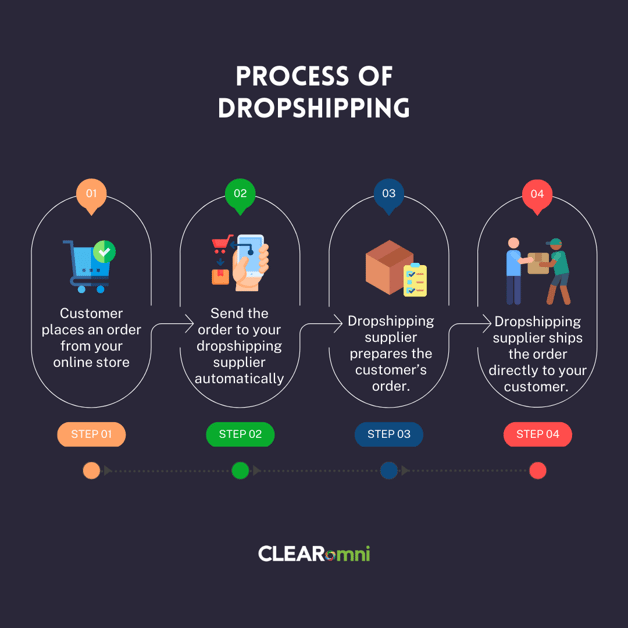If you are a multi-brand retailer or a department store that would like to expand your product assortments with low inventory risk, you probably heard about the multivendor marketplace or drop-shipping model. An inventory-heavy business model is not practical anymore, the technology emergence can easily be your key driver to thrive.
Often the term drop shipping and multivendor marketplace model (also known as B2B2C Marketplace) are used interchangeably, however, both of them have their distinct differences. Understand the differences so that you can decide on the model that suits your circumstances. In fact, businesses can choose both instead of one and be a hybrid model.
Multivendor Marketplace
Marketplaces can be easily understood as Amazon, eBay, Shopee and Lazada where third-party sellers have a direct relationship with the customers. In the multivendor marketplace scenario, sellers and vendors sell directly to customers via your eCommerce site. You can quickly onboard them in a dedicated Seller Centre and they can upload the products, set prices, manage their own inventory and process the orders fulfillment.
As a platform operator, you can manage the sellers, approve product listings and manage refunds. Enterprise-level multivendor marketplace enablers like CLEARomni also support distributed order management for a variety of fulfillment workflows. With the pre-set order splitting and complex fulfilment workflows, your store enables Click & Collect BOPIS, Ship from Store, endless aisles, and Dropshipping fulfillment methods.
A multivendor marketplace enabler with an embedded product information management system is able to support multi-lingual product information, information completeness score and version control.
Advantages of Multivendor Marketplace
.png?width=800&height=200&name=MULTI-VENDOR%20MARKETPLACE%20(1).png)
Brands and retailers with a multivendor marketplace platform are able to reach a wider audience. Different groups of sellers/vendors with different products are able to attract their own specific customer groups, all into one single eCommerce platform. The business can explore international markets when there are onboarding worldwide vendors along the journey.
- Greater Flexibility & Agility
Brands and retailers can quickly scale up their presence by onboarding more sellers/vendors in the market based on demand.
Business does not need to invest much in product inventory and storage. All these would be handled by the sellers themselves. This can greatly reduce those potential risks with holding products on hand and prior warehouse rental/building.
While most of the operations can be handled by the vendors, brands and retailers can focus on creating traffic flow and controlling the sellers. Meanwhile, businesses can have more time for product development and marketing.
Dropshipping
Dropshipping is a fulfillment model often used by start-up businesses as it doesn’t require cost to own the product. Merchants just need to place the order with the sellers after receiving a customer order. Drop-shippers don’t need to keep any physical products in their store. The physical ownership of the goods is always with the seller itself.
Merchants can create products and set delivery conditions in the store so that when a customer creates a new order, it will automatically redirect it to the seller/supplier. Using a drop-shipping model offers more control over the portfolio compared to the multivendor marketplace model. Merchant has full control over the product price, margin, promotions and customer services. Usually, the customers have no direct relationships and don’t know the suppliers of the products they purchased.

Advantages of Drop-shipping
Drop-shipper can have a strong brand identity without the presence of the actual supplier. The products and promotions are fully managed by the merchant. You can decide on the brand message, design and positioning while optimizing your website. You can also choose only the assortments that suit your brand identity to be listed on your site.
The merchant can set the final price of the products on the online store. This means the merchant can decide on the profit margin of each product. They can also have a flexible promotion event applied to all the products in the store. The revenue can be affected based on the team’s negotiation power with the suppliers through dropshipping relationships.
Differences between Multivendor Marketplace and Dropshipping
- The third-party teams who distribute their products in Marketplaces are usually known as ‘sellers’, and ‘vendors’ whereas in drop shipping are ‘suppliers’.
- Marketplaces gain profit by charging a commission from each sales order of third-party seller products achieved on their e-Commerce site. Drop shipping gains profit based on the margin of sales.
- In a drop shipping scenario, the consumer will know that a brand is selling an item, but will not know who is in charge of the processing and dispatching as it is handled by the supplier.

Using Shopify
By default, Shopify will assume a single origin only for each shipment. As a Multivendor Marketplace/B2B2C marketplace, the shipping costs are calculated on the basis that the order is being picked, packed and shipped from a single location regardless of your warehouse or a vendor location. You need to consider the shipping costs after adding all the products from several vendors which potentially cost you higher than the order profit. Charging all of them to your customers might cause an abandoned cart due to high shipping costs.
Whichever way you choose to leverage the multi-vendor marketplace or drop shipping model for your business, CLEARomni has the tech and custom code covered. Make an appointment to speak to our team so that we can help to increase your revenue faster.
